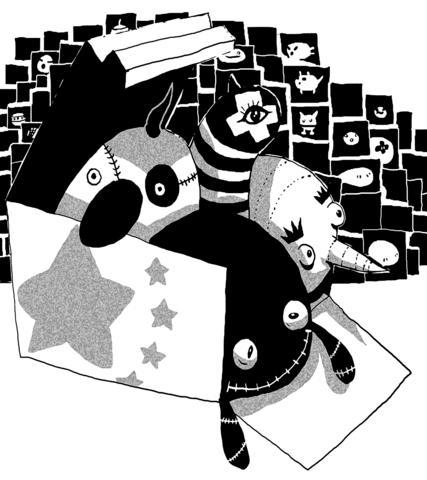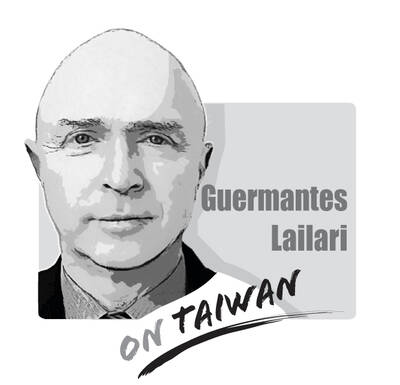When Mattel, the world's largest toy maker, announced its third recall in six weeks earlier this month, the company asked consumers to return toys because they contained dangerously high levels of lead paint.
Toxic paint also turned up in several other products Mattel has recalled in recent weeks, and in about 16 other US toy recalls this year, including the popular Thomas and Friends train sets, Consumer Product Safety Commission statistics show.
All the products were made in China.

Why is lead paint -- or lead, for that matter -- turning up in so many recalls involving Chinese-made goods?
The simplest answer, experts and toy companies in China say, is price. Paint with higher levels of lead often sells for a third of the cost of paint with low levels. So Chinese factory owners, trying to eke out profits in an intensely competitive and poorly regulated market, sometimes cut corners and use the cheaper leaded paint.
On the books, China's paint standards are stricter than those in the US, requiring paint intended for household or consumer-product use contain no more than 90 parts per million lead. By comparison, US regulations allow up to 600 parts per million.
The regulations are supposed to safeguard health, particularly in cases involving children, where ingesting excessive amounts of lead has been linked to disorders including mental retardation and behavioral problems.
But enforcement of the regulations in China is lax.
"The standard doesn't matter," said Scott Clark, a professor of environmental health at the University of Cincinnati.
"Remember, in the Soviet Union during the Cold War, they had very high standards on the books, but they never enforced them. It was just for show," he said
Clark and a team of investigators sampled paint supplies in Shanghai and other parts of China in recent years, and in some 26 percent of the cases, they said, the paint met neither US nor Chinese standards.
Even goods at high-end shopping malls in Shanghai contained unacceptable levels of lead.
But Clark said China was not alone in producing such tainted goods.
"We also looked at India, Malaysia and Singapore, and only Singapore met the requirements," he said.
China's General Administration of Quality Supervision, Inspection and Quarantine -- which has some oversight authority over paint regulations -- did not respond to questions about the prevalence of lead paint and about the inspection regimen.
But some Chinese toy makers were forthcoming. They acknowledged that they use paint with high levels of lead; others said they knew of companies that did -- sometimes because lead paint is cheaper, sometimes because it is easier to apply to hard surfaces and it produces a richer color.
Zhang, a sales manager at Big Tree Toys, a company in Shantou, southern China, who did not want her first name used, said leaded paint was approximately 30 percent cheaper than paint without lead. She noted that some countries, in the Middle East for instance, did not restrict lead content.
But Zhang insisted that if her company used leaded paint, it disclosed the fact.
"It depends on the client's requirement," she said. "If the prices they offer make it impossible to use lead-free paint, we'll tell them that we might have to use leaded paint. If they agree, we'll use leaded paint. It totally depends on what the clients want."
Chen Tao, sales manager at Chenghai Guangxin Plastic Toys Factory, also in Shantou, said his plant did not use lead paint at all. But he also said that Chinese regulators were essentially absent.
"There is a national standard on the lead level in toys," he said. "But no one really enforces it. Factories can pick whatever paint they want."
Another problem is the abundant supply of industrial paint in China, used on buildings, bridges and cars as well as sidewalks and other outdoor surfaces. Several paint companies said the government had no formal standard on lead in industrial paint.
As a result, a lot of cheap industrial paint may be finding its way into toy factories and even households.
While the US still allows paint with higher levels of lead to be used outdoors and in many industrial settings, paint with high lead content is slowly being phased out of even industrial use, experts say, partly because it can pose dangers to work crews who apply or remove it.
Lead paint is not the only problem in China. Lead is increasingly turning up in children's jewelry, for instance.
Last year, there were about a dozen recalls in the US of Chinese-made jewelry because of excessive lead levels. In the first eight months of this year -- possibly because of heightened regulatory scrutiny -- there were 22 lead-related recalls of children's jewelry, 21 of them of products made in China.
Of roughly 39 lead-related recalls this year, 38 were of Chinese-made goods, US Consumer Product Safety Commission statistics show.
Research conducted by scientists at Ashland University in Ohio, suggests that some of the jewelry may contain lead recycled from electronic waste shipped from the US to China.
"The jewelry is inexpensive," said Jeffrey Weidenhamer, a professor of chemistry at Ashland and author of several studies on the sources of lead in children's jewelry. "So it's likely scrap metal is used as a source of some of the stuff."
Researchers at Ashland say they have randomly tested plastic toys and found high levels of lead, mostly in products that have not yet been recalled.
In addition to importing waste containing lead, there are quantities of lead already in China. It is the world's largest miner and producer of lead, much of which goes into battery production, the US Geological Survey said, estimating that Chinese lead mining is up 50 percent since 2001.
China's lead therefore poses perhaps the greatest risk to the Chinese themselves, and their environment.
Chinese children are buying toys that are less likely to be inspected than those going onto US store shelves, and less likely to be subject to the same sort of recall system as in the US.
More fundamentally, scientists say heavy exposure to lead in the environment has serious health effects. It can linger in the air, leech into water supplies and crops and coat surfaces outdoors. It is those dangers that have led much of the world to move away from leaded paint and gasoline.
Factories in China often fail to provide adequate safety protection equipment to workers handling hazardous materials.
And while factory conditions are improving, partly with the help of unannounced audits by Western companies, many experts say there are simply too many small factories to patrol. A lot of these are obscure subcontractors of larger Chinese manufacturers supplying Western toy makers.
Yet a recent study by Canadian professors found that while lead paint is a growing problem with Chinese toy suppliers, the vast majority of US toy recalls are caused by the toy maker's own design flaws.
But after the spate of recalls, US toy makers and other companies are saying the Chinese suppliers had violated their contracts.
Many Chinese business executives in turn complain about the enormous pressures that Western companies place on suppliers to continually lower costs, which they say inevitably leads desperate or greedy business people to cheat in a country with poor regulations.
As worrisome, some experts say the high levels of lead being found in toys is most likely not a new phenomenon.
"I think it's probably been there for a while and we're just becoming aware of it," Weidenhamer said.
A response to my article (“Invite ‘will-bes,’ not has-beens,” Aug. 12, page 8) mischaracterizes my arguments, as well as a speech by former British prime minister Boris Johnson at the Ketagalan Forum in Taipei early last month. Tseng Yueh-ying (曾月英) in the response (“A misreading of Johnson’s speech,” Aug. 24, page 8) does not dispute that Johnson referred repeatedly to Taiwan as “a segment of the Chinese population,” but asserts that the phrase challenged Beijing by questioning whether parts of “the Chinese population” could be “differently Chinese.” This is essentially a confirmation of Beijing’s “one country, two systems” formulation, which says that

“History does not repeat itself, but it rhymes” (attributed to Mark Twain). The USSR was the international bully during the Cold War as it sought to make the world safe for Soviet-style Communism. China is now the global bully as it applies economic power and invests in Mao’s (毛澤東) magic weapons (the People’s Liberation Army [PLA], the United Front Work Department, and the Chinese Communist Party [CCP]) to achieve world domination. Freedom-loving countries must respond to the People’s Republic of China (PRC), especially in the Indo-Pacific (IP), as resolutely as they did against the USSR. In 1954, the US and its allies
Indian Prime Minister Narendra Modi arrived in China yesterday, where he is to attend a summit of the Shanghai Cooperation Organization (SCO) with Chinese President Xi Jinping (習近平) and Russian President Vladimir Putin today. As this coincides with the 50 percent US tariff levied on Indian products, some Western news media have suggested that Modi is moving away from the US, and into the arms of China and Russia. Taiwan-Asia Exchange Foundation fellow Sana Hashmi in a Taipei Times article published yesterday titled “Myths around Modi’s China visit” said that those analyses have misrepresented India’s strategic calculations, and attempted to view
When Chinese President Xi Jinping (習近平) stood in front of the Potala Palace in Lhasa on Thursday last week, flanked by Chinese flags, synchronized schoolchildren and armed Chinese People’s Liberation Army (PLA) troops, he was not just celebrating the 60th anniversary of the establishment of the “Tibet Autonomous Region,” he was making a calculated declaration: Tibet is China. It always has been. Case closed. Except it has not. The case remains wide open — not just in the hearts of Tibetans, but in history records. For decades, Beijing has insisted that Tibet has “always been part of China.” It is a phrase